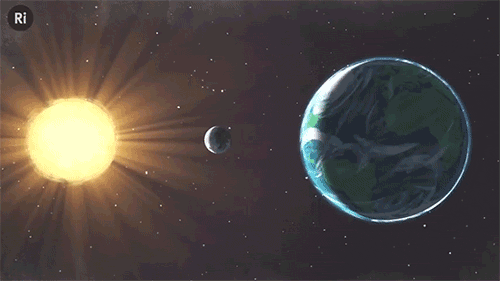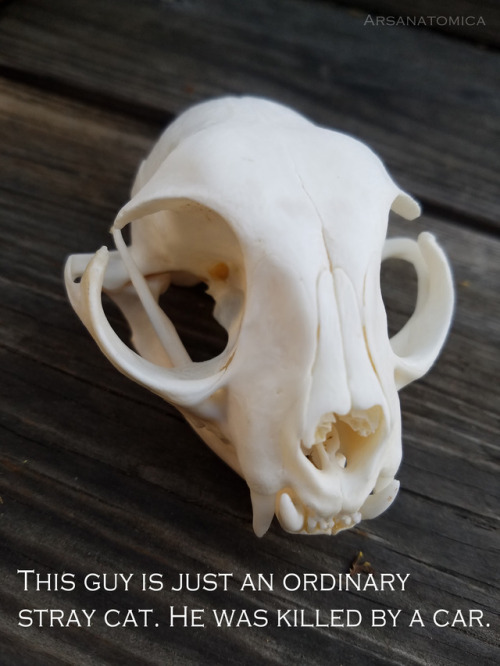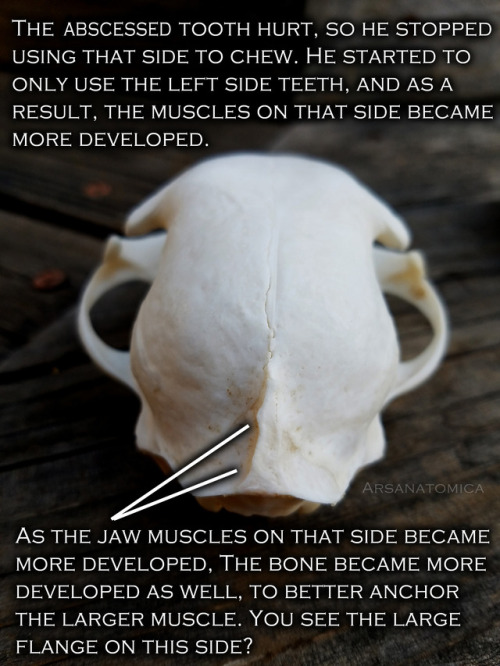Coloring Book Celebrates Mathematical Beauty Of Nature With Hand-Drawn Golden Ratio Illustrations










Coloring Book Celebrates Mathematical Beauty of Nature with Hand-Drawn Golden Ratio Illustrations
More Posts from T-sci-eng and Others

Students fortify concrete by adding recycled plastic
Adding bits of irradiated plastic water bottles could cut cement industry’s carbon emissions
Discarded plastic bottles could one day be used to build stronger, more flexible concrete structures, from sidewalks and street barriers, to buildings and bridges, according to a new study.
MIT undergraduate students have found that, by exposing plastic flakes to small, harmless doses of gamma radiation, then pulverizing the flakes into a fine powder, they can mix the plastic with cement paste to produce concrete that is up to 20 percent stronger than conventional concrete.
Concrete is, after water, the second most widely used material on the planet. The manufacturing of concrete generates about 4.5 percent of the world’s human-induced carbon dioxide emissions. Replacing even a small portion of concrete with irradiated plastic could thus help reduce the cement industry’s global carbon footprint.
Reusing plastics as concrete additives could also redirect old water and soda bottles, the bulk of which would otherwise end up in a landfill.
Read more.

You might be an engineer if you know how long a zeptosecond is. (It's a trillionth of a billionth of a second!) http://ow.ly/uUUb30caXrH
How does sand from Sahara end up in your windshield ?

TBH cleaning your car is a rather mundane task. But when you fill your head with some interesting physics the task actually gets rather pretty interesting. Here’s some good for thought on such an occasion :
The dust on your windshield might actually be from the Sahara desert
To understand how, lets start with some simple physics.
The stacked ball drop
You basically take couple of balls, align them up and drop them to the ground. The ball at the top reaches the most highest due to the subsequent transfer of energy from the other balls.

Source Video : Physics Girl
Here is an exaggerated but amazing slow motion of the same energy transfer with a water balloon. Notice how the transfer of energy takes place between the water balloon and the tennis ball.

Source Video : Slow Mo Lab
Sandstorms in the desert

Sandstorms/ Dust storms as you might be aware, are pretty common in the desert. . Dust storms arise when a gust front or other strong wind blows loose sand and dirt from a dry surface.

And this can cause something phenomenal to happen:
If the wind speed is sufficient then larger sand particles can propel finer ones high into the atmosphere. ( just like the stacked ball )
Then these fine particles are caught in the global wind pattern and are transported across the globe until they fall down to the earth as rain.
How cool is that ! Have a great day!
* Tracking saharan dust in 3D - NASA video
** All the World’s a Stage … for Dust - NASA article
** Wiki on Saltation










But that’s not all it can do. Microsoft and NASA teamed up to “bring” you, yes you, to Mars.
Follow @the-future-now

What have eclipses ever done for science? Quite a lot, actually!
The first measurement of the width of the Atlantic ocean in the 16th Century



When British settlers arrived in Virginia in the US, they weren’t sure how far across the globe they’d gone. They recorded the local time of a total eclipse of the moon - which is seen all across the night-time side of the planet. Their colleagues in London did the same, and when the travellers returned they could figure out the five hour time difference.
Edmond Halley discovered that the moon is moving away from the Earth


Halley realised you could back-calculate when previous eclipses would have occurred. But he noticed a mismatch between his predictions and the history books. The reason, he discovered, what that he was assuming the moon stayed the same distance from the Earth. It is actually getting further at about the rate your fingernails grow. And that means that one day (in a few million years, that is), the moon will be too far away to create any more total solar eclipses.
In 1919 a solar eclipse proved Einstein’s theory of relativity

Einstein’s theory predicted that the sun’s gravity should bend the light of nearby stars, meaning that in theory we should be able to see stars that are hidden just behind the sun. However, sunlight always blocks our view of these stars, and it was only during a solar eclipse that there was a short window to see if hidden stars were visible, as predicted. Astronomer Arthur Eddington travelled to West Africa and took photos that proved Einstein right.
Scientists still use solar eclipses today
It’s very hard to study the sun’s corona - a tenuous hot gas, which just one millionth of the light intensity of the sun. The shapes and lines of the corona show the nature of the sun’s magnetic field, and are only visible to study during an eclipse. NASA are also using this opportunity to help create the first thermal map of Mercury!
Want to know more? Watch our full video.





Looping thunderstorm gifs by Mike Hollingshead
There's an app for that
A “master list” of apps that are essential to student life.
Flashcards
Quizlet - Flashcard app that has pre downloaded flashcards and you can make your own flashcards. Available on multiple platforms
Duolingo - Language flashcard app
Flashcards+ - Another flashcard app
Math
Luna Calculator - calculator app ($2.99 on iOS)
Wolfram Alpha - online math solver
Symbollab - online math solver
Productivity & Planning
Forest - Grows a tree for every thirty minutes you are off your phone. If you touch your phone, the tree dies. ($0.99 on iOS)
FocusNow - Free version of Forest for iOS. Instead of trees, it grows fruits and vegetables.
30/30 - Great time management app
Any.Do - Great app for creating to-do lists, organize tasks, syncs with other devices. You can also change the priorities on certain tasks.
Studious - Great app on Android that reminds you when homework is due, when exams are and even silences your phone during class.
StayFocused - A chrome extension that you can customize to limit the time on websites to stay productive
Self Control - Allows you to block your own access to distracting websites for a certain amount of time. Useful for people who get distracted on the computer (Also known as Cold Turkey for Windows).
My Study Life - Student planner app
myHomework Student Planner - another Student planner app
To-do List - extensive to do list, like an online bullet journal
Learning
Itunes U - For any apple device users, a app that gives you access to free educational courses
TED - The whole catalog of TED talks at your fingertip.
Wikipedia - Free encyclopedia that can be used for general references
Khan Academy - study videos (absolutely amazing app/website)
Music
Coffitivity - coffee shop soundtrack
8tracks - great playlists, especially study playlists
Wake Up Calls
Alarmy - good alarm that will force you out of bed
Sleep Cycle - measures your sleep cycle
Math Alarm - alarm clock that forces you to do math to turn the alarm off, get’s your brain going
Class Lectures and Note Taking
Dragon Dictation - takes notes for lectures (useful for classes where professors talk faster than you can type)
XMind - mind mapping tool
Notability - another app for recording lectures. ($2.99 on iOS)
These are just a few study apps that can be useful for studying. I will add more (or make a new list) later as I learn about them; feel free to message me to add some to this list.









PERIODIC SPONGE SURFACES AND UNIFORM SPONGE POLYHEDRA IN NATURE AND IN THE REALM OF THE THEORETICALLY IMAGINABLE
By Michael Burt- Prof emeritus, Technion, I.I.T. Haifa Israel
The diversity of shapes and forms which meets the eye is overwhelming. They shape our environment: physical, mental, intellectual. Theirs is a dynamic milieu; time induced transformation, flowing with the change of light, with the relative movement to the eye, with physical and biological transformation and the evolutionary development of the perceiving mind. “Our study of natural form “the essence of morphology”, is part of that wider science of form which deals with the forms assumed by nature under all aspects and conditions, and in a still wider sense, with forms which are theoretically imaginable ..(On Growth and Form D'Arcy Thompson), “Theoretically” to imply that we are dealing with causal- rational forms. “It is the business of logic to invent purely artificial structures of elements and relations. Sometimes one of these structures is close enough to a real situation to be allowed to represent it. And then, because the logic is so tightly drawn, we gain insight into the reality which was previously withheld from us” (C. Alexander). A particular interest should be focused on those structures which are shaped like solids or containers, with continuous two-manifold enveloping surfaces, enclosing a volume of space and thus subdividing the entire space into two complementary sub-spaces, sometimes referred to as interior and exterior, although telling which is which, is a relativistic notion. On each of these envelopes, topologically speaking, an infinite number of different maps composed of polygonal regions (faces), which are bounded by sets of edge segments and vertices, could be drawn, to represent what we call polyhedra, or polyhedral envelopes. We come to know them by various names and notations, evolving through many historical cultures up to our present times; each representing an individual figure-polyhedron, or a family, a group, a class or a domain; convex-finite, Platonic and Archimedean polyhedra; pyramids, prisms; anti-prisms; star polyhedra; deltahedra; zonohedra; saddle polyhedra, dihedral, polydigonal, toroidal, sponge like, finite and infinite polyhedra; regular, uniform, quasi-regular, and so forth; all inscribable in our 3-dimensional space. It is these structures and their extended derivatives which shape our physical-natural or artificial man-conceived environment and provide for our mental pictures of its architecture. The number of forms which had acquired a name or a specific notation through the ages is amounting to infinity, although the number of those which comprise our day to day formal vocabulary and design imagery is extremely (and regretfully) limited by comparison, even amongst designers and architects, whose profession, by definition, compels them to manipulate and articulate forms and space. Here it is right to observe that name-giving is part of the creative and generative process. The number of polyhedral forms which did not receive, as yet a proper name or a notation is also infinite. Infinite is also the number of potentially existing and possible imaginary periodic forms, not envisaged yet. Conspicuous are those relating to sponge-like labyrinthian, polyhedral, space dividing surfaces, which until quite recently were not even considered as a research topic. The interest in these forms has been prompted by our growing awareness of their abundance in nature and their importance, not only in describing micro and macro-physical and biological phenomena, but also in coping with morphological complexity and nature of our built environment and its emerging new architecture and the order and formal character of our living spaces, on either the building or the urban scale. Nature is saturated with sponge structures on every possible scale of physical-biological reality. The term was first adopted in biology: “Sponge: any member of the phylum Porifera, sessile aquatic animals, with single cavity in the body, with numerous pores. The fibrous skeleton of such an animal, remarkable for its power of sucking up water”. (Wordsworth dictionary). the entire study here
© Michael Burt- Prof emeritus, Technion, I.I.T. Haifa Israel
That Time We Flew Past Pluto…
Two years ago today (July 14), our New Horizons spacecraft made its closest flyby of Pluto…collecting images and science that revealed a geologically complex world. Data from this mission are helping us understand worlds at the edge of our solar system.

The spacecraft is now venturing deeper into the distant, mysterious Kuiper Belt…a relic of solar system formation…to reach its next target. On New Year’s Day 2019, New Horizons will zoom past a Kuiper Belt object known as 2014 MU69.

The Kuiper Belt is a disc-shaped region of icy bodies – including dwarf planets such as Pluto – and comets beyond the orbit of Neptune. It extends from about 30 to 55 Astronomical Units (an AU is the distance from the sun to Earth) and is probably populated with hundreds of thousands of icy bodies larger than 62 miles across, and an estimated trillion or more comets.

Nearly a billion miles beyond Pluto, you may be asking how the spacecraft will function for the 2014 MU69 flyby. Well, New Horizons was originally designed to fly far beyond the Pluto system and explore deeper into the Kuiper Belt.

The spacecraft carries extra hydrazine fuel for the flyby; its communications system is designed to work from beyond Pluto; its power system is designed to operate for many more years; and its scientific instruments were designed to operate in light levels much lower than it will experience during the 2014 MU69 flyby.
What have we learned about Pluto since its historic flyby in 2015?
During its encounter, the New Horizons spacecraft collected more than 1,200 images of Pluto and tens of gigabits of data. The intensive downlinking of information took about a year to return to Earth! Here are a few things we’ve discovered:
Pluto Has a Heart

This image captured by New Horizons around 16 hours before its closest approach shows Pluto’s “heart.” This stunning image of one of its most dominant features shows us that the heart’s diameter is about the same distance as from Denver to Chicago. This image also showed us that Pluto is a complex world with incredible geological diversity.
Icy Plains

Pluto’s vast icy plain, informally called Sputnik Planitia, resembles frozen mud cracks on Earth. It has a broken surface of irregularly-shaped segments, bordered by what appear to be shallow troughs.
Majestic Mountains

Images from the spacecraft display chaotically jumbled mountains that only add to the complexity of Pluto’s geography. The rugged, icy mountains are as tall as 11,000 feet high.
Color Variations

This high-resolution enhanced color view of Pluto combines blue, red and infrared images taken by the New Horizons spacecraft. The surface of tPluto has a remarkable range of subtle color variations. Many landforms have their own distinct colors, telling a complex geological and climatological story.
Foggy Haze and Blue Atmosphere

Images returned from the New Horizons spacecraft have also revealed that Pluto’s global atmospheric haze has many more layers than scientists realized. The haze even creates a twilight effect that softly illuminates nightside terrain near sunset, which makes them visible to the cameras aboard the spacecraft.
Water Ice

New Horizons detected numerous small, exposed regions of water ice on Pluto. Scientists are eager to understand why water appears exactly where it does, and not in other places.
Stay updated on New Horizons findings by visiting the New Horizons page. You can also keep track of Pluto News on Twitter via @NASANewHorizons.
Make sure to follow us on Tumblr for your regular dose of space: http://nasa.tumblr.com
-
 hyraeth reblogged this · 2 years ago
hyraeth reblogged this · 2 years ago -
 lagunasymurcielagos-blog reblogged this · 7 years ago
lagunasymurcielagos-blog reblogged this · 7 years ago -
 nuckingfutssiren liked this · 7 years ago
nuckingfutssiren liked this · 7 years ago -
 nuckingfutssiren reblogged this · 7 years ago
nuckingfutssiren reblogged this · 7 years ago -
 rvtmurc reblogged this · 7 years ago
rvtmurc reblogged this · 7 years ago -
 t-art-culture reblogged this · 8 years ago
t-art-culture reblogged this · 8 years ago -
 t-sci-eng reblogged this · 8 years ago
t-sci-eng reblogged this · 8 years ago -
 ciscandocinza liked this · 8 years ago
ciscandocinza liked this · 8 years ago -
 plurdledgabbleblotchits liked this · 8 years ago
plurdledgabbleblotchits liked this · 8 years ago -
 soundslikelindsay reblogged this · 8 years ago
soundslikelindsay reblogged this · 8 years ago -
 thejlloyddesignuniverse liked this · 8 years ago
thejlloyddesignuniverse liked this · 8 years ago -
 ink-ano liked this · 8 years ago
ink-ano liked this · 8 years ago -
 favst-the-third reblogged this · 8 years ago
favst-the-third reblogged this · 8 years ago -
 strawyheart liked this · 8 years ago
strawyheart liked this · 8 years ago -
 sisterhoodofthetravellingpanties reblogged this · 9 years ago
sisterhoodofthetravellingpanties reblogged this · 9 years ago -
 midnight-margaritas-x reblogged this · 9 years ago
midnight-margaritas-x reblogged this · 9 years ago -
 midnight-margaritas-x liked this · 9 years ago
midnight-margaritas-x liked this · 9 years ago -
 inaworldlikeme reblogged this · 9 years ago
inaworldlikeme reblogged this · 9 years ago -
 amyalpha reblogged this · 9 years ago
amyalpha reblogged this · 9 years ago -
 adamantwalrus reblogged this · 9 years ago
adamantwalrus reblogged this · 9 years ago -
 alwaysyourperson reblogged this · 9 years ago
alwaysyourperson reblogged this · 9 years ago -
 alwaysyourperson liked this · 9 years ago
alwaysyourperson liked this · 9 years ago -
 because-weareglass reblogged this · 9 years ago
because-weareglass reblogged this · 9 years ago -
 jojoshere reblogged this · 9 years ago
jojoshere reblogged this · 9 years ago -
 jojoshere liked this · 9 years ago
jojoshere liked this · 9 years ago -
 sweetsandcharades liked this · 9 years ago
sweetsandcharades liked this · 9 years ago -
 amaryllisblackthorn reblogged this · 9 years ago
amaryllisblackthorn reblogged this · 9 years ago -
 amaryllisblackthorn liked this · 9 years ago
amaryllisblackthorn liked this · 9 years ago -
 queenfuckingbitch reblogged this · 9 years ago
queenfuckingbitch reblogged this · 9 years ago -
 queenfuckingbitch liked this · 9 years ago
queenfuckingbitch liked this · 9 years ago -
 littlerosepose reblogged this · 9 years ago
littlerosepose reblogged this · 9 years ago -
 littlerosepose liked this · 9 years ago
littlerosepose liked this · 9 years ago -
 mega-aggron liked this · 9 years ago
mega-aggron liked this · 9 years ago -
 wallyiscool reblogged this · 9 years ago
wallyiscool reblogged this · 9 years ago





